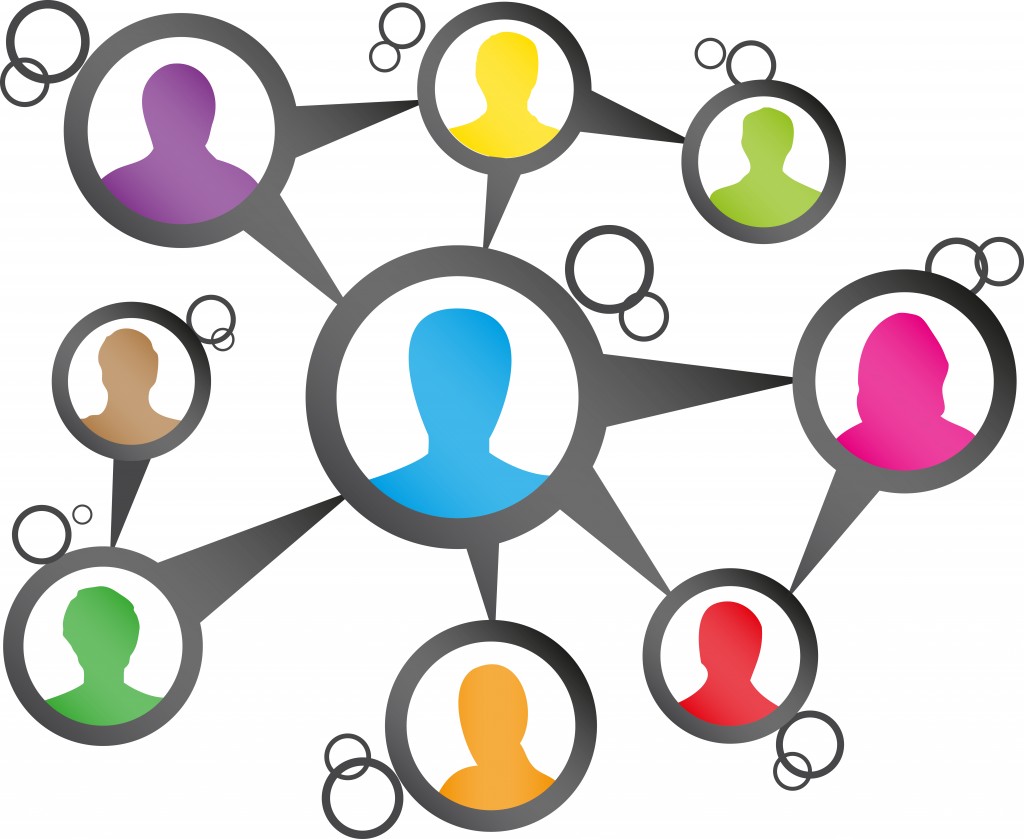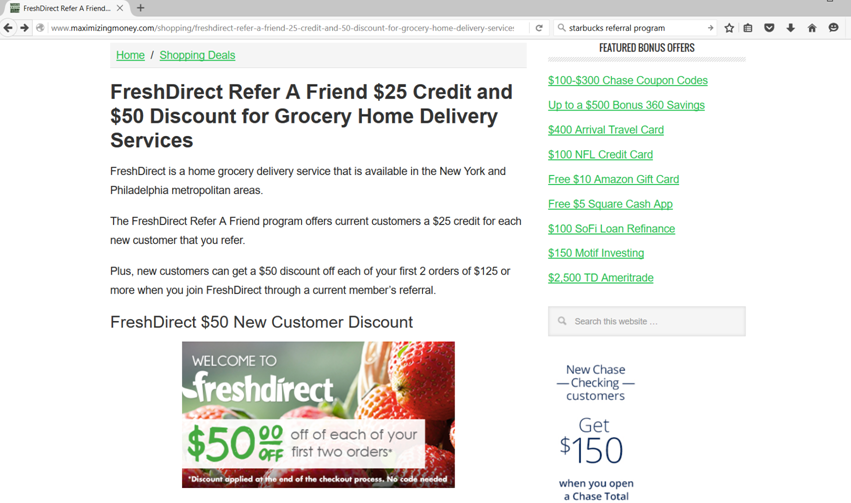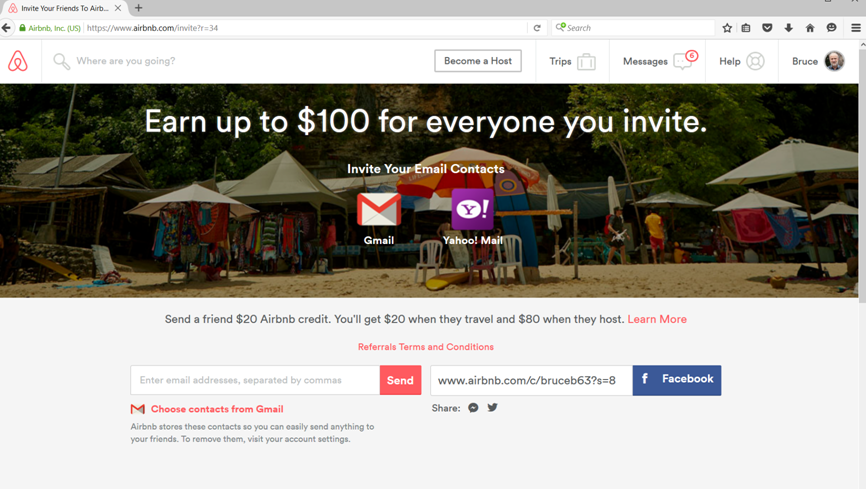Best Design Practices for Customer Referral Programs
By Bruce Bolger
Co-Editor, Enterprise Engagement: The Textbook
![]() Click here to download the PDF of this article.
Click here to download the PDF of this article.
 Everyone knows that word of mouth is the best advertising; it literally costs nothing because, according to Gallup research, customers who feel “wow” about a company will willingly share their happiness with friends or colleagues without any incentive at all.
Everyone knows that word of mouth is the best advertising; it literally costs nothing because, according to Gallup research, customers who feel “wow” about a company will willingly share their happiness with friends or colleagues without any incentive at all.
The smartest customer referral programs leverage the power of these kinds of “wow” experiences and feelings to not just reward or recognize customers and their friends and colleagues, but to build a community of passionate people – a “fan club” if you will – that takes the power of word of mouth to a new level in terms of customer acquisition value to the organization.
Without passionate customers, customer referral programs, no matter what the incentive, are unlikely to gain the best traction, since incentives alone are rarely enough to entice people to break traditional social barriers to “sell” to friends or colleagues. In fact, many people are more willing to refer a friend or colleague if there’s no incentive, since in this case they don’t have to have any awkward conversation about what they’re making on the deal.
Many referral programs fail to address all of the levers of engagement that will affect the outcome or economics of their programs. Here’s a guide to best practices in the creation of customer referral programs that addresses all of the factors necessary to maximize success.
Based on Enterprise Engagement: The Textbook, the Enterprise Engagement Alliance’s research-based curriculum on engagement program design, every program that aims to achieve a goal through people has to address the following key factors:
- A clear sense of mission or what the organization stands for
- Clear goals – where do we want this relationship to go?
- Emotional bonding – a sense of community
- Capability – are people able to do what is asked of them?
- Fun – a sense of humor
- Support – a sense of being valued and that someone human is inside
- Task value – a sense that what I’m doing has purpose
- Feedback – meaningful suggestions on how to improve.
 The best referral programs go beyond the simple concept of a carrot to address all of the levers that will engage people to refer your company to their friends or colleagues, which include the following elements:
The best referral programs go beyond the simple concept of a carrot to address all of the levers that will engage people to refer your company to their friends or colleagues, which include the following elements:- Leadership: Clear goals, mission, objectives and performance measures and a formal program.
- The audience: Who specifically can affect the outcome – customers, employees, dealers or distributors?
- Assessment: What kind of data do you have on these people in terms of their loyalty or engagement?
- Communications: How will you reach your target audience, not only at launch but over time?
- Capability: How can you make it easiest for people to participate?
- Rewards & Recognition: How can you make people feel rewarded in a way that addresses both intrinsic and extrinsic motivation?
- Feedback: How are you going to make sure all participants feel valued for their engagement?
- Return-on-Investment Measurement: How will you measure results, not only qualitatively but quantitatively?
Here is how to apply the above framework to the design of a customer referral program:
1. Leadership: Vision, Mission, and Plan
To achieve the best results, a referral program should go beyond the simple concept of “do this, get that” programs that put people in the uncomfortable or potentially embarrassing situation of “selling” to their friends or colleagues. The best and highest quantity of referrals come from people who are passionate about your company, about its brand, mission and spirit. What do you want your organization to be known for that people can feel pride in referring you in addition to getting some financial or other benefit? People are most likely to sell to friends, family, or colleagues when there’s a greater good – like buying Girl Scout cookies or participating in a charity. What can you do to make your referral program more meaningful or enriching, in addition to whatever incentives you offer?
2. Audience
Identifying the people who can affect the outcome of your referral program is not as simple as it seems. Yes, customers are the most obvious candidates, but which customers? Someone who has just made a complaint or posted something bad about your company on the Internet? Obviously not. The goal is to identify, to the best extent possible, the people most likely to engage, which of course includes frequent customers, anyone who bought something, people who have posted good things about your company or otherwise provided feedback, attended an event, entered a sweepstakes or contest. That said, other audiences include your own employees (whether customer-facing or even others who might know potential prospects in their communities), or distribution partners and retailers. The broad question to answer is: Who inside or outside of the organization is most likely to influence a referral? The best programs address all of these audiences.
3. Assessment and Analysis
In identifying the most likely audiences that can affect the outcome and provide the basis for a formal plan, it helps to analyze as much as possible whatever data your company has or could easily obtain that could help take guesswork out of program design. What do people like about your product or organization, or what should they like about it? What would make someone feel passionate enough about your organization to overcome most peoples’ unwillingness to sell something to their friends or colleagues unless they themselves feel passionate about it? In addition, it’s critical to understand the economics; what does your organization have to provide in value to reward and recognize your current and new customers for engaging in your program versus the likely return on investment? Ideally, your organization has some kind of calculation of the lifetime value of an average customer.
4. Communications
How will people know about your program and how will you continually remind them of it in the appropriate way? Before even determining the best messages and media, it’s important to further analyze the best timing. Based on the level of engagement of your customers, the great majority of them might have no inclination to recommend your company at all, or simply might not be in a position to do so. Since many companies cannot waste precious communications efforts on people unlikely to engage in a referral program, it’s critical to determine who to promote the program to and when. A natural time to communicate the offer is upon delivery of a product (communications in the box or packaging); completion of a sale; participation at an event or a contest or sweepstakes entry; customer loyalty program statement; a customer satisfaction follow-up call; etc.
Equally important is the message: It has to be short and sweet, but what benefits can you appeal to beyond the basic offer to make someone feel more comfortable about recommending your service? Maybe the offer is so good for both parties a fair percentage of people will be willing to mention it to appropriate friends or colleagues on that merit alone. Or perhaps there’s a cause associated with the offer that adds to the intrinsic value? Meaningful stories also work. As part of ongoing communications about the program, tell short stories about a particular referral that can help people visualize the pleasure they and the recipient could experience.
Integrating the messaging over time is critical, since it takes multiple impressions until most people actually process anything you’re trying to convey. The message can be in an email, at checkout on the web, on or inside the box when it arrives, at the point of sale, or delivered via a customer service person. Make sure that you have a communication tool for your customer to use to pass on to the friend or colleagues that makes it extremely easy to explain and sign up.
5. Capability
The program has to be easy or it won’t work. Companies that sell via the Internet have an advantage, as they can make the process simple while leveraging the power of social media. AirBNB makes it easy for people to invite their networks of friends or business colleagues. The ultimate prize is to entice people to share your offer with their entire network. Look for simple ways to make this happen – a web form, a code and redemption web page, a postage-paid postcard they can give to colleagues at an event, etc.
[ return to top ]
6. Rewards & Recognition
More attention is paid to decisions related to this subject than almost any other aspect of referral program design, and yet most programs overlook key research findings related to reward selection. The goal is to not only identify rewards sufficient to get someone’s attention, but to identify and address all of the ways people are motivated, both intrinsically and extrinsically, so they’re willing to go beyond the social barriers that are for most a good reason not to participate in a referral program.
The first rule in referral program design is to provide rewards, not only to the customer who refers another customer, but also to the new customer. In the AirBNB customer referral program, both the referrer and referee get a $20 credit as a guest, $80 if someone becomes a host, and people can continue to bank awards to redeem for multiple trips if desired. The Fresh Direct Refer a Friend program offers current customers a $25 credit for each new customer. The new customer gets a far greater value: a $50 discount for each of two orders over $125. Starbucks offers its loyalty program participants bonus stars for referring customers to sign up for their loyalty program, for which new customers get a free coffee when they join. The key is to ensure that the giver believes he or she is providing a friend or colleague true value. The Fresh Direct program is particularly appealing because the recipient gets much more than the giver, which makes it easier for the giver to explain without feeling like he or she is trying to make money off of a friend or colleague.
 The next question is what to offer as a reward. Most companies invariably offer their own products or services because it’s usually a less expensive alternative, and because presumably people have already demonstrated a desire for it. Ironically, a meta analysis* of research on noncash rewards suggests that this approach has the potential to minimize the potential long-term impact for multiple reasons:
The next question is what to offer as a reward. Most companies invariably offer their own products or services because it’s usually a less expensive alternative, and because presumably people have already demonstrated a desire for it. Ironically, a meta analysis* of research on noncash rewards suggests that this approach has the potential to minimize the potential long-term impact for multiple reasons:- Lack of immediate gratification. If you’re offering your own product as an award, it often cannot be utilized immediately. For instance, an AirBNB customer or recipient can’t use it until taking another trip or might simply use it to cover the cost of an upcoming trip he or she would have taken anyway.
- A risk of confusing recognition with pricing. Discounting, versus added-value strategies, provides customers the satisfaction of getting a better deal but does little to uplift one’s relationship with the company.
- Failure to maximize buzz. There’s nothing particularly compelling or exciting about a simple discount on a company’s purchase; people get promotions all of the time through coupons and other offers. People will be more likely to know you mean business (and they’ll be more likely to share the reward experience with colleagues) if it’s a compelling out-of-the-box idea.
- Failure to tap an emotional element. People are more likely to refer their friends and colleagues to organizations they sincerely believe in and value. Whenever possible, add elements to your program that give people an intrinsic reason to share with friends. The reward should make people feel valued and connected, and create buzz with family or significant others.
The ultimate opportunity with a reward & recognition program is to distinguish the award from other promotions and tap into people’s intrinsic motivation. This would argue for a reward that is clearly distinct from your own product in a way that offers immediate gratification.
Based on research on how to maximize reward ROI, consider tangible rewards other than what you sell (but related to what you sell) that demonstrate a personal understanding of the recipient. If you go this route, look for creative ways to reward people so that they feel “delighted” when they receive it, either in the store, on the web, or in their home through the packaging in which it’s delivered. Consider adding a charity element related to one of your company’s causes – i.e., 10% will be donated to the charity or some other way to add meaning to the reward.
7. Feedback
Anyone who has participated in a customer referral program is a high-value customer who should not only feel rewarded, but also valued. One of the best ways to do this is to create a new community of people who refer your products by giving them the chance to interact with your organizations in other ways, such as providing feedback or new ideas that can be rewarded with additional benefits when of concrete value. This community can provide a great sounding board for new ideas as well.
8. Return-on-Investment Measurement
Critical to determining the benefit of any customer referral program is to make sure there’s some way to measure the return-on-investment. It’s not as easy as it looks. To make a more accurate calculation, it’s important to understand the lifetime value of a customer, not just the value of an immediate purchase. That lifetime value can also include an allocation for a certain percentage who will refer your company to friends or colleagues.
When properly constructed and systematically deployed, referral programs can not only help generate new sales at a much lower customer acquisition rate as other options, but also enable your company to build a community of people willing to help you benefit from the power of word of mouth.
*See compendium of rewards and recognition research at the RewardsRecognitionNetwork, at the Incentive Research Foundation, at the Incentive Research Federation, and Incentive Marketing Association.
Article Sponsor
Dittman Incentive Marketing
Contact: Shannon Hedden
Phone 732-379-6264















